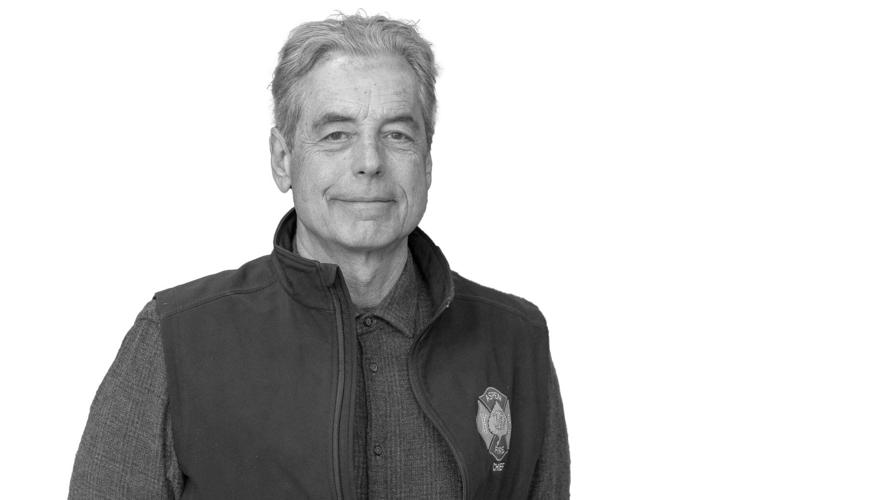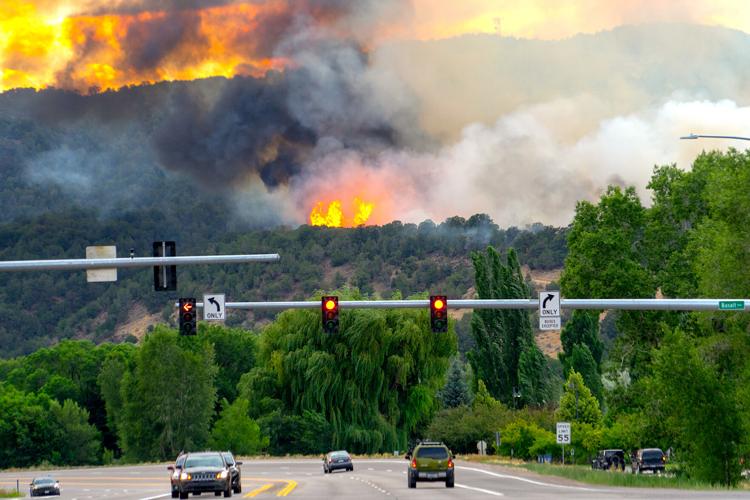
As wildfires continue to rage across Los Angeles, I can’t help but draw comparisons to the challenges we face here in Aspen. While the settings may differ — with LA’s sprawling urban environment contrasting with our valleys and mountain landscapes — the underlying threats and lessons are very similar.
Wildfires don’t discriminate. Whether they’re tearing through California’s chamise chaparral and eucalyptus trees or the Roaring Fork Valley’s towering conifer forests, aspen trees and oak brush, the destructive power is universal. The devastation is not just measured in acres burned but in lives upended, homes lost and ecosystems irreparably damaged. And as we’ve seen, climate change is exacerbating these risks, extending fire seasons and making each blaze more unpredictable and ferocious.

Smoke rises from the hillside around Basalt on July 3, 2018, after the start of the Lake Christine Fire.
In Los Angeles, the difficulties include a dense population, urban sprawl, and constant challenges between natural terrain and human development. While our population is smaller, here in Aspen, we also face complex challenges to manage fire risks like the seasonal influx of tourists, second homeowners and year-round recreationalists. Like LA, we must balance economic vitality with safety and environmental stewardship.
One of the most critical parallels is the need for preparedness. In both places, communities must adopt a proactive approach to fire mitigation. In the Aspen area, we are striving to invest heavily in both landscape scale projects, such as the upcoming Sunnyside prescribed burn, and homeowner preparedness efforts. Regionally, we are collaborating on public education campaigns and other efforts between all our valley’s fire departments, the U.S. Forest Service and others including HOAs such as Starwood and Mountain Valley, while working side-by-side with private concerned citizens.
However, preparedness isn’t just about cutting brush or instituting fire bans. It’s also about fostering a culture of responsibility both locally, regionally and statewide.
Residents in fire-prone areas, whether in Aspen or LA, must recognize their role in preventing fires and ensuring their properties are as fire-resistant as possible. Many of these issues including home hardening, vegetation management and availability of homeowners insurance are currently being addressed at the state level by the Wildfire Resiliency Code Board (in which I am a voting member; check out our list of upcoming meetings to share your voice at dfpc.colorado.gov/WRCB).
Another shared challenge is the strain on firefighting resources. The sheer size and intensity of modern wildfires push fire crews to their limits. Mutual aid agreements and resource sharing are more critical than ever. When California calls for help, it’s common for crews from Aspen and other Roaring Fork Valley fire departments to respond, just as other outside agencies have lent their expertise during our own crises such as the Glenwood Springs Grizzly Fire in 2020 and the Lake Christine Fire in Basalt in 2018. This spirit of collaboration underscores the fact that wildfire is not just a local issue but a national problem requiring a unified effort.
Perhaps the most important similarity is the resilience of the people affected by these fires. Communities in Los Angeles, in which I have many friends and colleagues, are already showing incredible strength and solidarity, just as Aspen and our valley communities have done in the face of past wildfires. It’s a reminder that while the flames may consume physical structures, they cannot destroy the human spirit.
Looking ahead, the lessons learned from the Marshall Fire in Boulder County which started on Dec. 30, 2021, and what is currently unfolding in Los Angeles should inspire us in Aspen to remain vigilant. Wildfire mitigation is not a one-and-done effort; it’s an ongoing commitment being championed locally by efforts of Aspen Fire’s director of wildfire resiliency, Ali Hammond, and others at the Aspen Wildfire Foundation (aspenfire.com/foundation). Stronger community-wide wildfire prevention networks are being fostered by Director Angie Davlyn at the Roaring Fork Valley Wildfire Collaborative (rfvwildfire.org).
As climate change continues to reshape our landscapes and challenge our assumptions, we must adapt and innovate, whether it’s through better building and fire codes, advanced firefighting technologies and utilizing early detection like the Pano AI wildfire cameras stationed throughout the Roaring Fork Valley (pano.ai). How we fight against wildfires both before and after the flames are at our doorsteps will define the future of places like Aspen and LA alike.
The fires in Los Angeles are a wake-up call for some and a reminder for others of our shared vulnerabilities and the urgent need to act, especially in wildfire prone areas. As Aspen’s fire chief, I stand in solidarity with my counterparts in LA and urge our communities to come together in addressing this growing threat. We’re all in this together and together is how we’ll overcome it.



